17 F. high in the Twin Cities Tuesday.
27 F. average high on February 9.
33 F. high on February 9, 2015.
February 10, 1965: A snowstorm dumps 15 inches of snow at Duluth over two days.
February 10, 1861:
An ice storm impacts Elk River. Coatings of 1/2 inch of ice are
reported. The ice broke off many large branches and saplings were bent
to the ground.
February 10, 1857:
Extreme cold at Fort Ripley. E.J. Baily, Assistant Surgeon notes:
'Spirit thermometer -50 at 6am. Mercury frozen in charcoal cup. Spirit
thermometer at Little Falls 16 miles from the fort -56 at 6am. The
lowest degree of cold on record in the territory'.
Goosebump Alert - Whiff of Spring Next Week?My
Navy son is stationed in San Diego, a palm tree-studded oasis of warmth
and sanity in southern California, a city with the distinction of
having the best climate in the USA. "The weather is here, wish you were
beautiful!" the text read.
If only.
Some days I fantasize
about predicting the weather in a sunny, warm (boring) city. It might be
fun for a couple of weeks, but I'd be climbing the walls before long.
The variability, the seasons, the weather-specific traditions, the ebb
and flow of the weather? Those are the things I would miss.
And
it's not like we're having a "Polar Vortex" winter - now we gripe when
it gets below zero. In the 70s we had consecutive WEEKS below zero. This
is still a pale imitation of the winters your grandparents muddled
through.
A clipper brushes far southwest MN with snow today. I could see an inch or 2
Sunday, followed by a sweeping thaw next week as Pacific air charges east. 30s and a few 40s are likely.
Is
this the last significant cold shot of winter? Probably. Cold waves are
possible in March, but fairly rare. Spring is coming. Trust me.
Widening Your Bubble.
"Paul, I'm cold! How can the planet be warming?" It's probably in our
caveman DNA to look out the window and assume it's this way
(everywhere). It's challenging keeping a global perspective, especially
over long periods of time. That's why climate scientists analyze trends
going back many hundreds of thousands of years. It's colder than average
here today, but much of the northern hemisphere is still warmer than
average as of Wednesday morning. Map:
Climate Reanalyzer.
Clipped by a Clipper.
Today's swirl of low pressure pinwheeling out of Alberta (imagine that)
will drop a couple inches of powder on far southwestern Minnesota.
Clouds will thicken ini the metro, but any flakes should stay south and
west of a line from Alexandria to Willmar to Mankato. 84-hour
accumulated snow product: NOAA NAM and AerisWeather.
Light At The End of the Tunnel.
4 more character-building days, then a significant thaw next week with
30s returning, even a chance of 40s by the end of next week, according
to European guidance. The next clipper pushes a shield of light snow
across the state over the weekend; maybe an inch or two - the pattern
not ripe for big storms (of any flavor) anytime soon. Source:
WeatherSpark.
Coldest Morning: Saturday.
Under the center of a Canadian high pressure bubble skies will be
clear, winds light, conditions ideal for a rapid loss of thermal energy.
Translation: Saturday morning is going to be cold with wake-up
temperatures close to -10F in the suburbs. Source: Aeris Enterprise.
Lake Effect - in February?
A steady stream of polar air passing over the relatively warm waters of
the Great Lakes will spark very significant lake effect snows in the
coming days; the best chance of plowable snows into next week over the
Minnesota Arrowhead from a weekend clipper. 10-Day snowfall
accumulation: NOAA GFS and AerisWeather.
Spring Preview from AccuWeather.
I envision a milder than average spring, based on the current El Nino,
which is now bigger than the one that hit in 1997-98. The spring of
1998 brought a rash of extreme weather and severe thunderstorms with
large hail; I vaguely recall nearly $2 billion in damage in1998, much of
that hail-related. Does that automatically mean a similar spring is
imminent. No. Every El Nino is different, with varying symptoms and
impacts, but don't be shocked if we see more severe storms (earlier than
usual). Here's a clip from
AccuWeather.com: "...
However,
that will change as April progresses and storms track from the
Southwest, leading to increased severe weather in the central and
southern Plains, Mississippi Valley and Midwest. "Intense warmth ahead
of these storms comming out of the West is going to promote severe
weather. Those are the ingredients you need," Pastelok said. "The thing
that worries me the most is that it could turn into heavy rain producers
that could lead to flooding. And we've seen lots of flooding already
over this past winter season in the Mississippi Valley..."
March Preview.
Although February may wind up a little colder than previous runs of
NOAA's CFSv2 (Climate Forecast System) were predicting a few weeks ago,
the model continues to insist that El Nino-warmed winds will result in a
much warmer than average March for much of western and central Canada
and the northern tier states of the USA. We'll see, but the model has
been amazingly consistent. Map source: WeatherBell.
Has El Nino Abandoned L.A.?
Pacific-fueled storms have whacked the Pacific Northwest and northern
California, but it's still abnormally warm and (mostly) dry across
SoCal. Here's a clip from
The Los Angeles Times: "...
Southern
California is still well below average rainfall, with downtown L.A.
reporting 52% of normal since Oct. 1. But deluge after deluge to the
north has built back the snowpack — it's 105% of normal in the Sierra
Nevada — and begun to refill drought-depleted reservoirs. For Southern
California, the strong El Niño "hasn't been a great predictor so far
this winter," said Stanford University climate scientist Daniel Swain,
and "hasn't been influencing the atmosphere in exactly the same way that
we have seen." A massive ridge of high pressure is keeping much of
California dry and warm this week. In Southern California, that brought
dry winds and temperatures that approached 90..." (Graphic: L.A. Times).
NOAA and NASA Team Up To Investigate Strongest El Nino on Record.
It's looking even bigger and more pervasive than the previous record
warm stain in the Pacific in 1997-98. Here's an excerpt from
The Guardian: "
America’s
two leading climate science agencies are conducting an unprecedented
survey via land, sea and air to investigate the current El Niño event
and better understand its impact on weather systems that have brought
both parched and soaking conditions to North America. The project,
which will conclude in March, will deploy resources from the National
Oceanic and Atmospheric Administration (Noaa) and Nasa to analyze one of
the strongest El Niños on record. El Niño is a periodic phenomenon in
which parts of the eastern Pacific warm, causing a ripple effect for
weather around the world..."
Animation credit: NOAA Climate Prediction Center.
El Nino Seems To Have Smashed 1997 Record in Past Three Months. With additional perspective on today's weather headline here's an excerpt from
New Scientist: "
The
evidence is in: we seem to be living though the most extreme of extreme
weather events. Last year, New Scientist reported early indications
that the present El Niño event is probably the strongest ever recorded.
A new analysis backs that view. El Niño is a periodic phenomenon that
occurs when ocean temperatures warm in the central and eastern Pacific
Ocean. Even before this current event began, forecasters warned that it was likely to wreak havoc with the world’s weather..."
Sea Surface Temperature Anomalies:
earth.nullschool.net
 Is Climate Change Making El Ninos Worse?
Is Climate Change Making El Ninos Worse? That Remains a Scientific Mystery. The jury is still out. Here's an excerpt at
Texas Climate News: "...
But
what about the deadly Texas downpours of last May, when the ENSO was
developing? Was global warming partly to blame? Utah State University
researchers assert
that it was. They said greenhouse gas emissions brought a “significant
increase” in abnormal rainfall in Texas and Oklahoma. Others aren’t
convinced. Even if global warming is strengthening the atmosphere’s
response to El Niños – unproven, Nielsen-Gammon said – the current one
needed little help..."
Graphic credit above: "
The
National Oceanic and Atmospheric Administration provides this summary
description of the phenomenon that produces El Niño and La Niña
conditions: “El Niño and La Niña are the warm and cool phases of a
recurring climate pattern across the tropical Pacific—the El
Niño-Southern Oscillation, or ‘ENSO’ for short. The pattern can shift
back and forth irregularly every two to seven years, and each phase
triggers predictable disruptions of temperature, precipitation, and
winds. These changes disrupt the large-scale air movements in the
tropics, triggering a cascade of global side effects.”
 Drought Remains "Very Serious" in California
Drought Remains "Very Serious" in California.
Recent rains and heavy snows are putting a dent in the drought, but the
long term implications are still uncertain. Here's a clip from
Capital Public Radio: "...
January
brought above-average precipitation to California, but the narrative
says more is needed to end the state’s historic four-year drought.
"Despite heavy rainfall in January, an above-average snowpack and rising
reservoirs in many areas, the California State Water Resources Control
Board recently approved an 8-month extension of existing drought-related
emergency regulations,"
the report says. "This is a reminder that although El Niño-related
precipitation has been bountiful so far this winter, the drought
situation in California remains very serious..."
Photo credit above: "The
second snowpack measurement of the winter Feb. 2 was 130 percent of
average at Phillips Station off Highway 50 near Sierra-at-Tahoe Road." California Department of Water Resources / Courtesy.
New Lyme-Disease-Causing Bacteria Discovered by Mayo Researchers. Here's another day-brightener, courtesy of
MinnPost: "
Researchers at the Mayo Clinic have discovered a new species of bacteria in the Upper Midwest that causes Lyme disease.
They have named the bacteria Borrelia mayonii, after the two brothers,
William and James Mayo, who founded the Rochester, Minnesota, clinic.
Before this finding, which was published Monday in the journal Lancet Infectious Diseases, the only species believed to cause Lyme disease in North America was Borrelia burgdorferi..."
Image credit: Blacklegged ticks, Minnesota Department of Health.
Driven by Power Outages and Savings, Towns Look to Microgrid. Is smaller better, more secure, resilient and ultimately sustainable? Here's an excerpt from
The Associated Press: "
An
upstate New York town that repeatedly found itself without power for
days during a string of storms is planning a dramatic step by pulling
its municipal buildings entirely off the electric grid. The decision by
Nassau to rely on solar, wind, landfill gas and battery storage by 2020
puts the town of 5,000 near Albany on the leading edge of a national
campaign to develop "microgrids" designed to make communities more
energy independent and the grid more resilient. While only a few
communities have become early adopters and natural disasters have been a
driving force, proponents say there is also growing interest nationwide
from places looking to save money by selling excess power to utilities
and to help the environment..."
Global Initiative Introduces First Proposal to Reduce Airplane Pollution.
The Guardian reports; here's the intro: "
Governments
proposed for the first time on Monday to reduce climate pollution from
airplanes, plugging one of the biggest loopholes in last December’s
landmark Paris agreement. The global initiative was a first attempt to
halt carbon emissions from air travel – one of the fastest growing
sources of climate pollution. In a call with reporters, White House
officials described the standards as “a huge deal”, noting that the
aviation authority has also proposed an aspirational goal to achieve
carbon neutrality by 2020..."
File photo: Alamy.
China's Experimental Fusion Reactor Maintains Superheated Hydrogen Plasma for 102 Seconds. We're getting ever-closer; here's an excerpt at
Gizmag: "
A
bit of friendly competition never hurt anyone. China's EAST tokamak and
Germany's Wendelstein 7-X aren't exactly fusion energy's answer to
Messi and Ronaldo, but through their own flashes of individual
brilliance the reactors might one day command the world's attention in a
much more important way. Wendelstein 7-X made headlines last week after
generating a quarter-of-a-second pulse of hydrogen plasma, and now
scientists at China's Institute of Physical Science have flexed their
fusion muscle to sustain the gas for an impressive 102 seconds..."
Photo credit: "
China's Experimental Advanced Superconducting Tokamak reactor." (Credit: IPP)
 Economists Keep Saying We Should Put a Price on Nature. Now They've Finally Done It.
Economists Keep Saying We Should Put a Price on Nature. Now They've Finally Done It. Factoring in the real (socialized) costs is essential in any discussion of costs and benefits; here's an excerpt at
The Washington Post: "
Putting
a price on nature may seem like an impossible task, but economists
believe that finding a way to calculate the value of natural resources
is crucial when it comes to deciding whether our use of a resource is
sustainable. Natural resources are capital assets, economists have
argued, in the same way that land, buildings and stocks are considered
assets — and spending money to protect these resources should be viewed
as an investment in the future rather than just another cost.
The problem is that, so far, no one has developed a good way to
estimate the monetary value of natural resources. But now, a group of
scholars may have finally come up with a solution..."
"Flint Isn't An Anomaly. We're Heading Toward a National Water Crisis." Here's an excerpt of an Op-Ed from Mark Ruffalo at
The Washington Post: "...
Sadly,
there have since been numerous high-profile cases of contamination,
such as in Toledo, Ohio, in 2014, where agricultural runoff and
crumbling infrastructure led to an algal bloom in Lake Erie that made
the city’s drinking water unsafe. Also in 2014, in West Virginia, a chemical spill contaminated the Elk River, the tap water supply for hundreds of thousands of people. This past August, 3 million gallons of contaminated water were released into
the Animas River in Colorado, resulting in lead levels 3,500 times
normal and arsenic levels 300 times normal, affecting many communities
and farms..." (File image credit: ThinkStock).
54 Million Americans Incorrectly Labeled as Unhealthy. This vaguely reassuring article is courtesy of
Quartz; here's an excerpt: "
Body Mass Index is used by everyone from insurers to health professionals to determine whether someone is at a healthy weight. According to the index,
which is calculated by dividing a person’s weight by the square of the
person’s height, someone with a BMI of 18.5 to 24.9 is “healthy,”
whereas a BMI of 25 to 29.9 is classed as “overweight” and a BMI of 30
or higher is categorized as “obese.” But these numbers do not directly
correlate with physical health, according to a study of 40,420 people
published this week in the International Journal of Obesity..."

U.S. Military: Robot Wars.
Financial Times has a must-read story focused on the future role of the military and the use of robotics; here's an excerpt: "...
The
underlying objective of the new strategy is to find weapons and
technologies to ensure US forces “can fight their way to the fight” as
one official puts it — to evade the layered missile defences both China and Russia can
erect, to defend bases against attack from precision-guided missiles
and to be able to operate carrier fleets at a much greater distance from
an enemy. For some Pentagon planners, the long-term answers will be found in robotics
— be they unmanned, autonomous planes or submarines that can surprise
an enemy or robot soldiers that can reduce the risk to humans by
launching attacks. Mr Work, who once co-wrote a paper called “Preparing
for War in the Robotic Age”, said in December: “Ten years from now, if
the first person through a breach isn’t a fricking robot, then shame on
us...”

Congressional Clocks Have a Secret Code. Let the conspiracy theories begin. Here's an excerpt at
Atlas Obscura: "...
Look
along the top of a Congressional wall clock, and you’ll see seven small
light bulbs. Even the fancier clocks in members’ offices have them.
From time to time, these will light up in particular sequences,
accompanied by loud, long buzzes or series of shorter buzzes. These
patterns all have meanings: they’re meant to communicate to people
working on the Hill when electronic votes are called, when one chamber
or the other is adjourned or in recess, and when members need to think
about actually being in the Senate or House chamber..."
Photo credit: "
Library of Congress rotunda clock." (Photo: Library of Congress).
What Nationality Is A Baby Born Mid-Flight? Great question. How much time do you have? Atlas Obscura tackles the question; here's a clip: "...The
answer is quite complicated, and contested. Countries have different
laws governing the citizenship of babies born on their soil–either jus
soli or jus sanguinis; Latin for right of the soil versus right of
blood, respectively. Most countries follow jus sanguinis, which dictates
that the baby can only assume citizenship via one or both parents.
However, the U.S. and some of its neighbors observe the more
generous jus soli, which grants automatic citizenship to babies born on
their soil..."
Photo credit above: "
What is the nationality of a baby born on a plane?" (Photo: mliu92/Flickr CC BY-SA 2.0)
WEDNESDAY: Clouds increase. Chilly. Winds: N 5-10. High: 11
WEDNESDAY NIGHT: Partly cloudy and cold. Low: 0
THURSDAY: More sun, comfortably numb. Winds: W 5-10. High: 16
FRIDAY: Next shot, feels like 0 to -10F with some sun. Winds: NW 10-20. Wake-up: 9. High: 12
SATURDAY: Cobalt-blue sky, light winds. Winds: NE 5-10. Wake-up: -6. High: 9
SUNDAY: Couple inches of snow? Slick. Wake-up: 4. High: 20
MONDAY: Overcast, above average again. Winds: S 8-13. Wake-up: 15. High: 31
TUESDAY: Early flurries, slow clearing. Wake-up: 28. High: 35
* 40s are likely the latter half of next week.
Climate Stories...
 No Climate Conspiracy: NOAA Temperature Adjustments Bring Data Closer to Pristine. Here's the intro to a story at The Guardian: "Congressman Lamar Smith (R-TX) has embarked upon a witch-hunt against climate scientists at NOAA, accusing them of conspiring to fudge global temperature data. However, a new study
has found that the adjustments NOAA makes to the raw temperature data
bring them closer to measurements from a reference network of
pristinely-located temperature stations. Before delving into the new
study, it’s worthwhile to revisit the temperature adjustments that Lamar
Smith disputes. Volunteers have been logging measurements from weather
stations around the world for over 150 years, and climate scientists use
that data to estimate the Earth’s average surface temperature.
No Climate Conspiracy: NOAA Temperature Adjustments Bring Data Closer to Pristine. Here's the intro to a story at The Guardian: "Congressman Lamar Smith (R-TX) has embarked upon a witch-hunt against climate scientists at NOAA, accusing them of conspiring to fudge global temperature data. However, a new study
has found that the adjustments NOAA makes to the raw temperature data
bring them closer to measurements from a reference network of
pristinely-located temperature stations. Before delving into the new
study, it’s worthwhile to revisit the temperature adjustments that Lamar
Smith disputes. Volunteers have been logging measurements from weather
stations around the world for over 150 years, and climate scientists use
that data to estimate the Earth’s average surface temperature..."
Photo credit above: "
The U.S. Climate Reference Network consists of 114 stations, including this one in Capitol Reef National Park, Torrey, Utah." Photograph: NOAA.
Cruz's "Pseudoscientific" Climate Claims. No,
the satellite record isn't the best measure of tropospheric warming
because it only infers temperatures at various altitudes, and the
onboard sensors are peering through a cooling stratosphere, another
symptom of AGW; here's the intro to a fact-checking story at FactCheck.org: "While on the campaign trail in New Hampshire, Republican presidential candidate Ted Cruz gave a speech to local residents that contained inaccurate and misleading claims about climate science and its terminology:
- Cruz
claimed “none of the alarmists say ‘global warming’ anymore — now it’s
‘climate change.’ ” That’s inaccurate. Scientists still use both terms,
but tend to use “climate change” more often because, in addition to
warming, it refers to phenomena such as sea-level rise and changes in
precipitation patterns.
- Cruz also said “climate change
is the perfect pseudoscientific theory because it can never, ever, ever
be disproven.” This is false. It could be, but the chances are slim.
Climate change rests on the veracity of the greenhouse effect, a theory
which has been repeatedly verified since it was first proposed in 1824..."
 U.S. Military to War Game Climate Change Threats
U.S. Military to War Game Climate Change Threats.
Concern grows about climate volatility and weather/water/crop
disruption as a "threat multiplier", accelerating global challenges and
conflicts, many of which invariably blow back on the USA. Here's an
excerpt at
Climate Home: "
US
military planners have been ordered to war game climate change
scenarios, focusing on “geopolitical and socioeconomic instability”
linked to extreme weather. A new directive says forces need to undertake
joint training exercises with allies to “enhance capacity” and “improve
tactics” for tackling impacts linked to global warming. “Mission
planning and execution must include identification and assessment of the
effects of climate change on the DoD [department of defence] mission,”
it reads..." (Image source: U.S. Military, Flickr).
 The Pentagon Just Issued Marching Orders on Climate Change. Here's the intro to an update from VICE News: "A
bit over a year after identifying climate change as a "significant
challenge" for the US military, the US Department of Defense has given
its top officials orders for handling the hazards posed by a warming
world. The boring-but-important 12-page document issued in January tells
the armed service chiefs and top civilian officials to identify how
climate change will affect their missions, figure out how to manage any
risks it poses, and factor those into their planning. It gives specific
tasks to various Defense Department offices and regional commands, from
determining how higher sea levels or longer droughts affect US bases to
what new gear might be needed to work in a thawing Arctic.
The Pentagon Just Issued Marching Orders on Climate Change. Here's the intro to an update from VICE News: "A
bit over a year after identifying climate change as a "significant
challenge" for the US military, the US Department of Defense has given
its top officials orders for handling the hazards posed by a warming
world. The boring-but-important 12-page document issued in January tells
the armed service chiefs and top civilian officials to identify how
climate change will affect their missions, figure out how to manage any
risks it poses, and factor those into their planning. It gives specific
tasks to various Defense Department offices and regional commands, from
determining how higher sea levels or longer droughts affect US bases to
what new gear might be needed to work in a thawing Arctic..."
Global Warming: Coming To An Ice Fishing Contest Near You. Here's an excerpt from a post by climate science communicator
Greg Laden: "
Over
the last several years, ice fishing contests, which are a big deal in
Minnesota, have been repeatedly cancelled due to insufficient ice
thickness on the relevant lake. Some of these contests have been
permanently cancelled because the annual cancelations were becoming more
frequent. Just now, the Maple Lake Ice Fishing Derby has been cancelled. That’s bad. But even more disturbing is this:
Ice conditions for the Eel Pout Festival have created enough concern to
prompt vehicle restrictions, according to the Cass County Sheriff’s
Office..."
7 Smarter Ways To Talk About Climate Change. Some good advice from
Grist; here's an excerpt: "...
There
are billions and billions to be made in [the energy sector] inevitably
over the coming two decades. America can lead that or can be dragged
backwards into it. So what role does American business play in this
transition? Like in the transition from horse carriages to cars: Do you
want to produce horse carriages or be in the car business? When Google
throws billions of dollars
at Nest, it’s not because they want to be kind. You draw people into a
commercial discussion and, again, climate is the background...”
Companies Are Misrepresenting Their Carbon Emissions. Michigan Radio has a story that is raising eyebrows; here's the intro: "
Many
companies are making their carbon emissions public, to show they are
doing their part to fight climate change. But new research by Lux
Research indicates most companies in the U.S. are either underestimating
or overestimating their emissions. Ory Zik is Vice President of
Analytics for Lux Research. He says estimating one's own carbon
emissions is very difficult. That's because electricity moves from
region to region on grids..."
File photo credit: "
This is not a Google data center. It's one at the University of Hertfordshire. Data centers use a fair amount of electricity." Credit wikieditor243 / wikimedia/commons.
Weakening Ice Shelves Raise Sea Level Rise Conncerns. It's the "unknown unknowns" that keep climate scientists up at night. Here's an excerpt at
Climate Central: "...
The findings, published in Nature Climate Change on Monday, show that West Antarctica
— long an area of scientific concern when it comes to sea level rise
— has some of the weakest areas of defense protecting its ice.
Researchers analyzed the tongues of ice — known as ice shelves — to see
how much ground each ice shelf could lose before processes began to
speed up, sending more inland ice to the sea. “When they break-up, it is like pulling the plug in the bathtub for the adjacent tributary glaciers,” Johannes Fürst,
an ice expert at University of Erlangen-Nuremberg and leader of the new
study, said. “For our article, we just wondered how far we can cut into
the existing ice-shelf geometries before a notable and instant dynamic
effect becomes apparent.”
Map credit: "Map
showing the percentage area of "passive" ice in all of Antarctica's ice
shelves. Passive ice can be lost without dramatically changing glacier
and ice sheet dynamics." Credit: Fürst et al., 2016.
What The Earth Will Be Like in 10,000 Years.
Chris Mooney delves into the latest science for a very long-range
outlook. Chances are our distant ancestors won't be amused. Here's an
excerpt at The Washington Post: "...In
hundreds of years from now, people will look back and say, ‘yeah, the
sea level is rising, it will continue to rise, we live with a constant
rise of sea level because of these people 200 years ago that used coal,
and oil, and gas,’ ” said Anders Levermann, a sea-level-rise expert at
the Potsdam Institute for Climate Impact Research and one of the paper’s
authors. “If you just look at this, it’s stunning that we can make such
a long-lasting impact that has the same magnitude as the ice ages...”
Image credit: "Oceanographer Josh Willis from NASA's Jet Propulsion Laboratory explains how sea levels have changed over the last two decades." (NASA).
Consequences for 21st Century Policy for Multi-Millenial Climate and Sea-Level Change. Here's an abstract excerpt and link to a new paper that's generating headlines, courtesy of
Nature Climate Change: "...
Here,
we argue that the twentieth and twenty-first centuries, a period during
which the overwhelming majority of human-caused carbon emissions are
likely to occur, need to be placed into a long-term context that
includes the past 20 millennia, when the last Ice Age ended and human
civilization developed, and the next ten millennia, over which time the
projected impacts of anthropogenic climate change will grow and persist.
This long-term perspective illustrates that policy decisions made in
the next few years to decades will have profound impacts on global
climate, ecosystems and human societies — not just for this century, but
for the next ten millennia and beyond."
 Sea Level Rise Will Last Twice as Long as Human History
Sea Level Rise Will Last Twice as Long as Human History. With perspective on the new research highlighted above, here's the intro to a story at
Newsweek: "
Huge
sea-level rises caused by climate change will last far longer than the
entire history of human civilization to date, according to new research,
unless the brief window of opportunity of the next few decades is used
to cut carbon emissions drastically. Even if global warming is capped at
governments’ target of 2 degrees Celsius — which is already seen as
difficult — 20 percent of the world’s population will eventually have to
migrate away from coasts swamped by rising oceans. Cities including New
York, London, Rio de Janeiro, Cairo, Calcutta, Jakarta and Shanghai
would all be submerged..."
Graphic credit: Guardian, source: Nature Climate Change.
Blackrock: World's Largest Investor Flags Up Climate Risk. How much exposure do you have in your portfolio?
Climate Home has the story - here's the intro: "
In
a letter to the heads of S&P 500 companies and top European
corporations, Larry Fink expressed concern at the lack of focus on
environmental and social risks in boardrooms. “For too long, companies
have not considered them core to their business – even when the world’s
political leaders are increasingly focused on them, as demonstrated by
the Paris Climate Accord. “Over the long-term, environmental, social and
governance (ESG) issues – ranging from climate change to diversity to
board effectiveness – have real and quantifiable financial impacts...”
Photo credit: Suisse/Flickr.
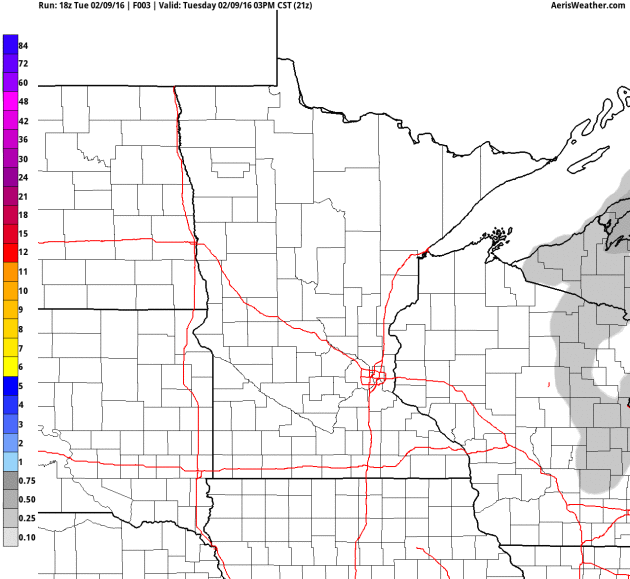
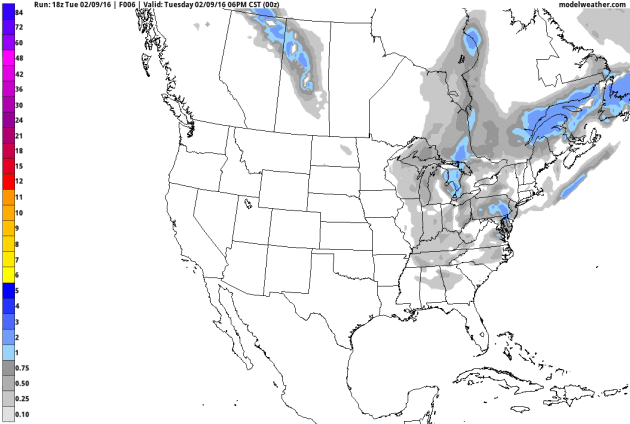
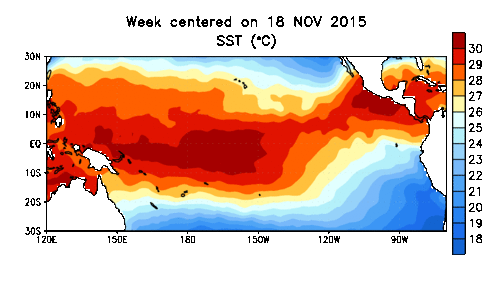

.jpg)

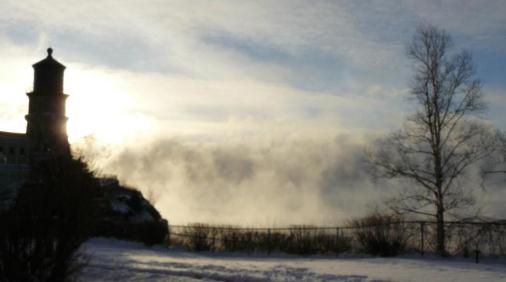

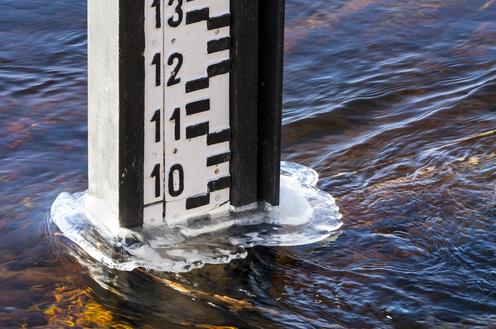
No comments:
Post a Comment